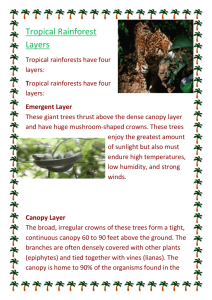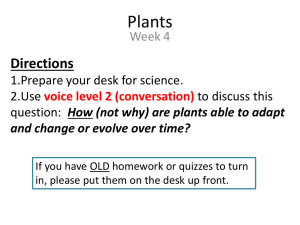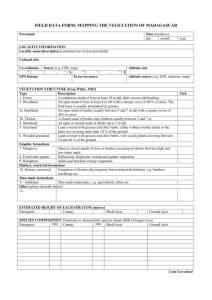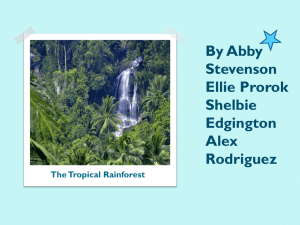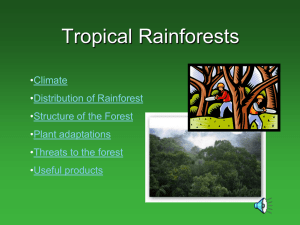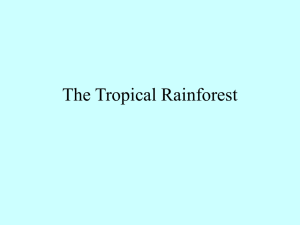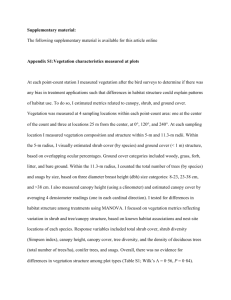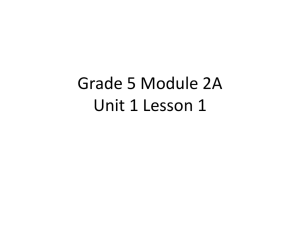Tropical Rainforest Vegetation & Adaptation Worksheet
advertisement
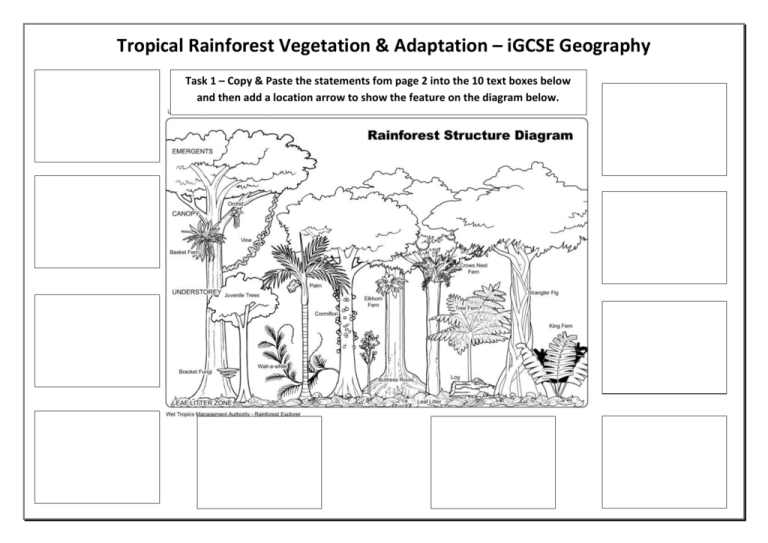
Tropical Rainforest Vegetation & Adaptation – iGCSE Geography Task 1 – Copy & Paste the statements fom page 2 into the 10 text boxes below and then add a location arrow to show the feature on the diagram below. Tropical Rainforest Vegetation and Adaptation Emergents: Emergents are tall trees that grow above the canopy layer in order to reach sunlight. Emergents can grow in excess of 50 metres. Canopy: The canopy layer contains about 50% of the rainforests wildlife. The canopy layer is extremely thick and sits at between 25 and 35 metres. Shrub Layer: The shrub layer is near the forest floor and is also extremely dense. Because the canopy is so thick the shrub layer has to adapt to survive in less light. Lianas: These are woody vines that climb up other trees to try and get into the canopy and capture sunlight. Strangler Figs: Strangler figs grow around the outside of other trees taking their light and nutrients and slowly killing the host tree. However, when the host tree collapses so does the strangler fig. Butress Roots: Very long roots that are designed to support tall trees and to suck up the maximum amount of nutrients in fairly nutrient poor soil. Fan Palms: Huge wide leaved plants that aim to capture as much sunlight and rainfall as possible. Humus Layer: Rainforest soils are fairly infertile and dependent on the humus layer (decaying biological matter). If the source of humus is removed through deforestation then soils degrade very quickly. Evergreen: Most vegetation in rainforests does shed its leaves once a year. However, because the climate of rainforests is similar all year, they shed their leaves at different times providing a constant source of biological matter and keeping the rainforest green. Drip tip leaves: A lot of vegetation have leaves designed for rainfall to travel over them and drip to the ground. This is because the vegetation does not wanted to be damaged by large quantities of water.


